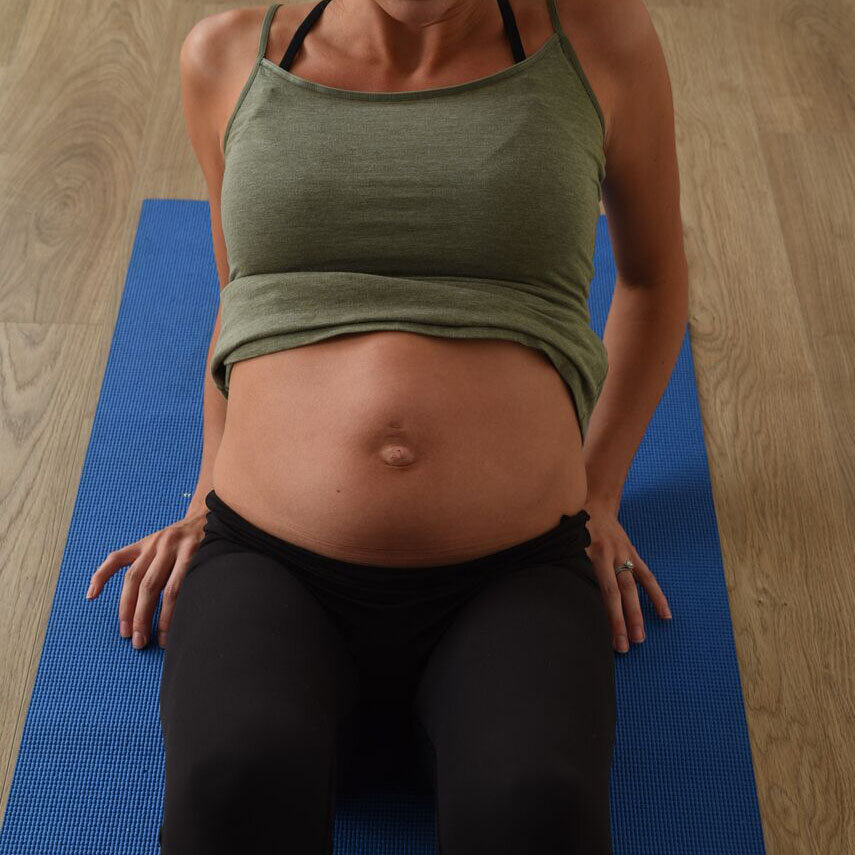Back
How Can I Get Rid of Abdominal Coning?
By Dr. Christine Martirez PT, DPT on 10/10/2024

Abdominal coning is a condition where the abdominal wall protrudes in a cone-like shape, typically when straining or engaging the core muscles. While it is commonly observed in pregnant and postpartum women, it can affect anyone, including men and non-pregnant individuals. This blog post will delve into the anatomy of the abdominal muscles, explain the causes and risks of abdominal coning, and discuss how pelvic floor physical therapy (PFPT) can help address this condition.
What is Abdominal Coning?
Abdominal coning occurs when there is an increased intra-abdominal pressure that causes the linea alba (the connective tissue running down the midline of the abdomen) to bulge outward. This condition is often seen during movements such as lifting, getting out of bed, or performing exercises. It is a sign that the core muscles are not properly engaging or that there may be an underlying issue, such as diastasis recti (separation of the rectus abdominis muscles).
Who Can Be Affected by Abdominal Coning?
Pregnant and Postpartum Women:
During pregnancy, the growing uterus stretches the abdominal muscles and the linea alba, making coning more likely. Postpartum, the weakened abdominal muscles and stretched connective tissue can persist, leading to coning during certain activities.
Men and Non-Pregnant Individuals:
Abdominal coning can also affect men and non-pregnant women, often due to weak core muscles, improper exercise techniques, or conditions that increase intra-abdominal pressure.
Anatomy of the Abdominal Muscles
Understanding the anatomy of the abdominal muscles is crucial for addressing abdominal coning effectively:
Rectus Abdominis:
Often referred to as the "six-pack" muscles, these run vertically along the front of the abdomen. They are responsible for flexing the spine and stabilizing the core.
Linea Alba:
This connective tissue runs down the midline of the abdomen, connecting the left and right sides of the rectus abdominis. It is a key structure involved in the integrity of the abdominal wall.
Internal and External Obliques:
These muscles are located on the sides of the abdomen. They assist in rotating the trunk, flexing the spine laterally, and stabilizing the core.
Transverse Abdominis:
The deepest layer of abdominal muscles, wrapping around the torso like a corset. It plays a crucial role in maintaining intra-abdominal pressure and stabilizing the spine.
How Pelvic Floor Physical Therapy Can Help
Pelvic floor physical therapy (PFPT) is a specialized form of therapy that addresses dysfunctions in the pelvic floor and core muscles. Here’s how PFPT can help manage and reduce abdominal coning:
Comprehensive Evaluation:
Assessment:
A pelvic floor physical therapist will conduct a thorough evaluation, including a review of medical history, physical assessment of posture and movement patterns, and an examination of the abdominal muscles for signs of diastasis recti and coning.
Pelvic Floor Muscle Training:
Exercises:
Specific exercises to strengthen the pelvic floor and abdominal muscles, which work in conjunction with the core muscles to support the abdominal wall.
Biofeedback:
Techniques to improve awareness and control of the pelvic floor muscles, ensuring proper engagement during activities.
Core Strengthening:
Transverse Abdominis Activation:
Exercises that focus on engaging the transverse abdominis without causing coning. These may include gentle core exercises such as pelvic tilts, deep abdominal breathing, and controlled movements.
Postural Training:
Education on proper posture and body mechanics to reduce strain on the abdominal muscles and prevent coning.
Manual Therapy:
Hands-on techniques such as myofascial release and soft tissue mobilization can help improve the flexibility and function of the abdominal muscles and surrounding tissues.
Functional Training:
Movement Patterns:
Guidance on safe movement patterns and techniques for daily activities, such as lifting and bending, to avoid excessive intra-abdominal pressure and prevent coning.
Exercise Modification:
Advice on modifying exercises to ensure they are performed safely and effectively without causing coning.
Education and Support:
Lifestyle Modifications:
Recommendations for lifestyle changes, including proper nutrition, hydration, and strategies to manage body weight, which can affect abdominal pressure and muscle function.
Pain Management:
Techniques to manage any associated pain or discomfort, including relaxation exercises and supportive devices if necessary.
Abdominal coning is a common issue that can affect anyone, not just pregnant and postpartum women. Understanding the anatomy of the abdominal muscles and the factors that contribute to coning is essential for addressing this condition effectively. Pelvic floor physical therapy offers a comprehensive approach to managing abdominal coning through targeted exercises, manual therapy, and education on proper body mechanics and posture. By working with a skilled pelvic floor physical therapist, individuals can strengthen their core, reduce coning, and improve their overall abdominal and pelvic health.
Read More:
How Chronic Pelvic Congestion in Men Contributes to Prostatitis By Shannon Strauch, PTA, STMT-1 on 12/11/2024 How lymphatic issues can cause symptoms of prostatitis Prostatitis and Tight Pelvic Floor Muscles: A Comprehensive Guide By Shannon Strauch, PTA, STMT-1 on 12/10/2024 How a tight pelvic floor can be the reason for prostatitis symptoms
Are you ready to live pain free?
Request An Appointment